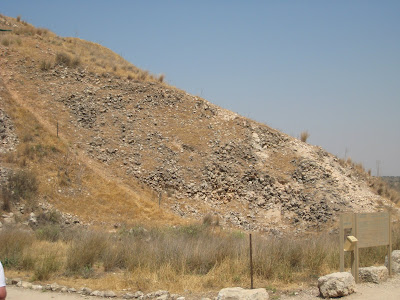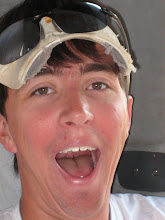The Dead Sea was awesome, I don't remember the last time I floated on water. I also hiked up Masada, a Herodian fortress atop a hill overlooking the Dead Sea which was intense. On the same day we saw the spring at Engev, and Qumran, the city where the Dead Sea Scrolls were written. One privelage we had is our leader knows the location of the cave where the scrolls were found, he took most of us to the first cave and those who were able and felt like running behind him got to see Cave 2, there are 11 caves in all where scrolls were found. I followed him to cave 2 and according to him only about 100 people have ever been two Caves 1 and 2.
The trip to Galilee was really neat being able to swim in the evening and actually going to places where we know Jesus was. One of the coolest places was the Cove of the Sower. It is a cove on the Sea of Galilee with a sharp incline forming somewhat of an amphitheater from the top of the hill you could here the person reading Scripture on the shore probably about 150 yards away without him yelling. It is evident that Jeses would have used this cove which could hold close to 10,000 people.
Jordan has been fun, but not as interesting Biblically. Geresa was neat because Jordan has done a good job reconstructing and preserving the ruins of the Greco-Roman city. Petra was impressive although once again not Biblical. Although seeing the place where Indiana Jones found the Holy Grail was neat. I also went up to another impressive tomb that was an optional hike that was really neat, called The Monastery because Byzantine monks took it over and made it into a monastery. Another short optional hike took me to a viewpoint at a cliff where I was able because of rare clear conditions to see Israel. Finally today in Jordan we went up to Mt. Nebo where Moses watched the Israelites enter the Promised Land, but today was not clear.
Sunrise at Masada, Dead Sea below.

Tunnel at Geresa, Jordan looking from the Theater to the Temple of Zeus.

Indiana Jones, now me. Really it is the Treasury at Petra, Jordan









































